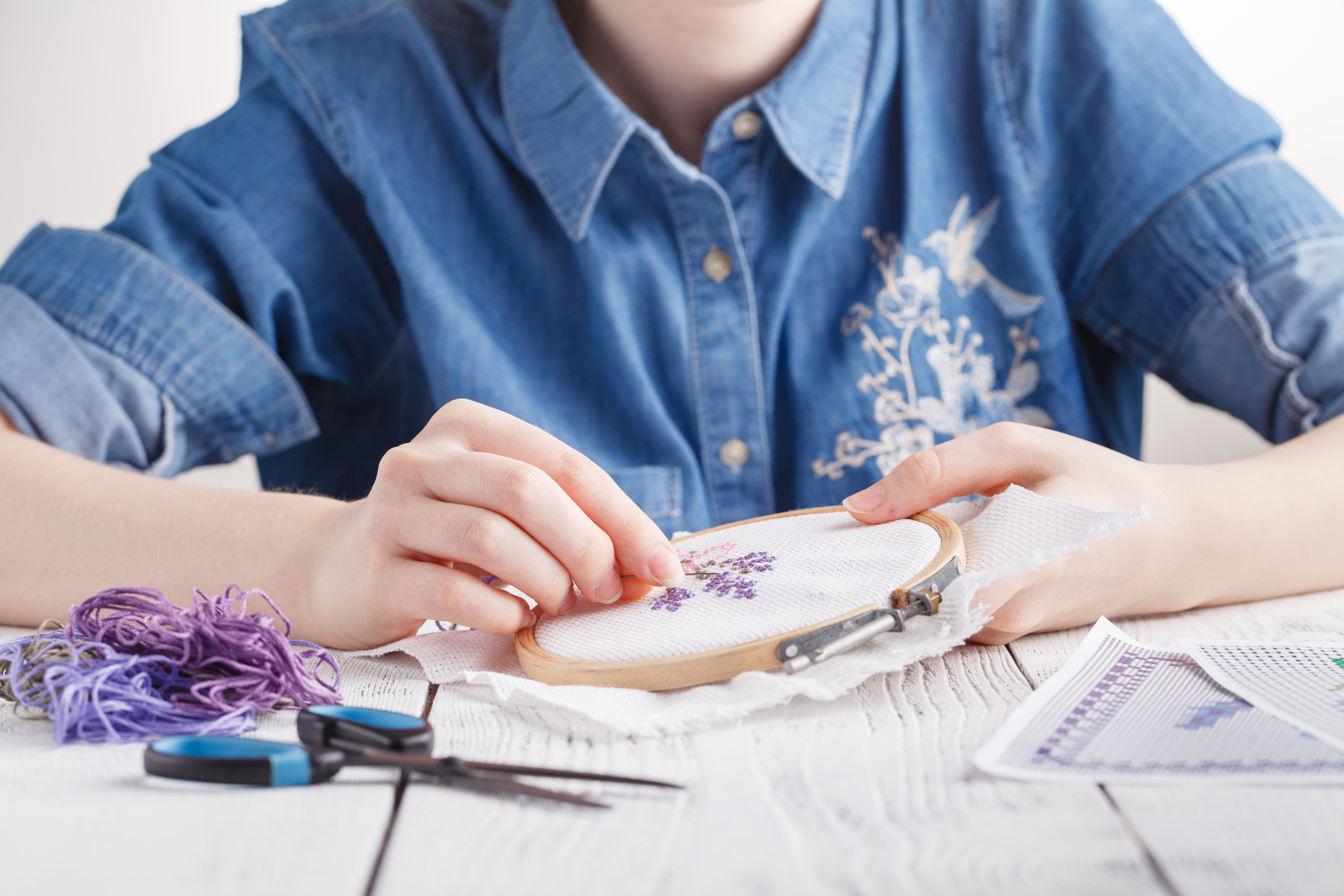
MINDFULNESS is a term which is often bandied about these days, but what exactly does it mean?
According to the trusty OED, it refers to ‘a mental state achieved by concentrating on the present moment, while calmly accepting feelings and thoughts.’
It’s so easy to get swallowed up in the hustle and bustle of everyday life, meaning that when it comes to hobbies, such as crafting we often lose sight of the calming effects that can be had from projects like hand-stitching.
Why hand-sew when a machine can do it quicker, right?
Wrong!
Although a machine may get a task done in record time, which is great if you’re sewing a last-minute party frock, mindfulness is induced by hand, helping you to unwind and channel those creative vibes.
Slow stitching takes this a step further by focusing on the process of making rather than striving for perfection, which generates a sense of calm. There’s so many slow stitching techniques, but the make do and mend method is a great place to start.
Reduce, reuse, recycle – do you remember this old maxim? Slow stitching holds these values close to its heart, encouraging a mindful approach towards the environment by upcycling old garments.
There’s so many fabrics out there begging to be repurposed, so don’t be afraid to experiment and see where your creativity takes you – and remember, it doesn’t have to be perfect!
Mending can come in many forms, but three up-and-coming techniques are wabi-sabi stitching, Japanese boro and sashiko. The wabi-sabi concept appreciates the imperfect and impermanent, and when it comes to crafting, it’s about accepting that there will be mistakes, but these are what make projects interesting and ultimately, unique – so why not make a feature of them? Japanese boro and sashiko are great ways to do this, as they focus on mending with patches and geometric stitches to transform those former imperfections into stand-out designs.
Stitching by hand on a daily basis is incredibly therapeutic, so why not start a sewing journal? It’s a wonderful way to make a visual note of different stitch styles, plus you can even use it to record cherished memories using shapes and colours. Make a start on your sewing diary by whipping up a cover with embroidery.
Hand-sewn patchwork and paper piecing are ideal for putting your mind at ease and adding meaning to your projects. You can use leftover material from around your home which have a specific memory imbued in them — why not transform those old scraps into a cosy quilt or an accessory like a patchwork bag?
Kick back and relax with Sew magazine’s free embroidery and sashiko patterns, visit sewmag.co.uk

Enjoy the convenience of having The Sunday Post delivered as a digital ePaper straight to your smartphone, tablet or computer.
Subscribe for only £5.49 a month and enjoy all the benefits of the printed paper as a digital replica.
Subscribe